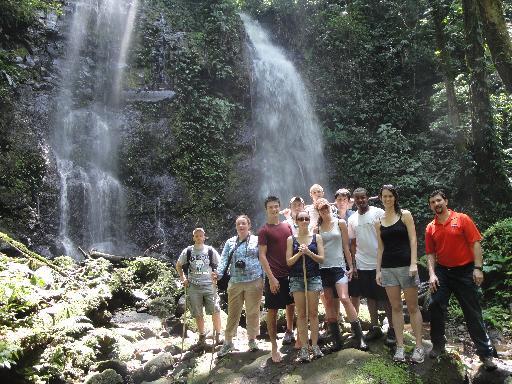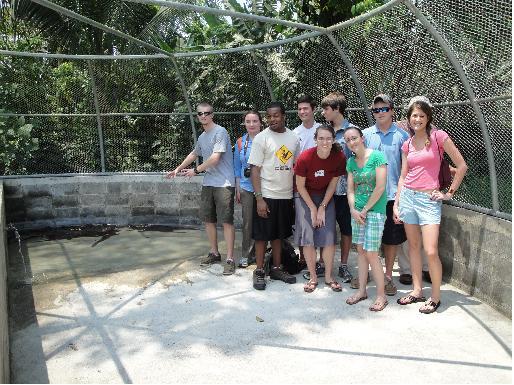Recently, the Department of Wood Science and Forest Products designed the course Global Issues in Sustainability based on student centered teaching methods with the goal of facilitating an academic and practical environment where students were able to understand how human dimensions, economic development, and policy affects the sustainability of natural resources such as water, forestry, and wildlife. The course was offered for the first time in Spring 2010. The course objectives were to: 1)connect the academic with the practice, 2) foster an effective interdisciplinary curriculum. 3)link students to work experience and job opportunities; 4) and to engage and empower students in the realm of sustainability, natural resources, and environment.

The course was structured in three different phases. In phase I students met from week one to week 7 at a classroom to cover the fundamental materials for an excursion to an environmentally friendly country. In Phase II the students were taken to a field trip to Costa Rica for 12 days where they visited
national parks, ecotourism private projects, and were lectured by Costa Rican experts in sustainability and natural resources. The last phase consisted of student led class meetings from week eleven to week sixteen.
To address the first objective, connect academic with practice, students were asked to research about the sustainability of Costa Rica previous to the field trip. Students perceived the country as sustainable where economic development was highly dependable on tourism, and as a direct consequence, they thought the country would be clean, with neat infrastructure, and little social problems. After the students came back, they were asked again for the perception of the country as a sustainable one, and the majority of the perceptions changed. Even though they still perceived the country as a sustainable one, direct observation of current issues affecting natural resources caused the students to believe that the sustainability of the country is actually quiet delicate and fragile. The second objective, foster an effective interdisciplinary curriculum, was accomplished by allowing students from different majors to register for the course. Students loved this configuration and learned so much about different perceptions on the same subject matter. One comment that reflects very well the accomplishment of this mandate is this one:
“…I liked the diversity of student backgrounds on the trip. I learned as much from the other students as I did from the lectures and field trips. Nathan and Abby always offered a business perspective I would have never seen myself. Colin saw design and potential in buildings and landscapes that helped me understand the culture better. Alyssa used big words like paleosismicity, and now I kinda know what that means. I guess I am just saying that having diverse backgrounds really added to the trip for me…”
The third objective was to link students to work experiences and job opportunities. Several students were able to saw opportunities for future business applications within the realm of ecotourism in Costa Rica and they are currently actively seeking those out. They are still in contact with locals, and networking in hopes of future job and more research interests.
Finally, the fourth was to engage and empower students. When students were asked at the end of the course if they feel more empowered, the whole class responded that they did indeed. For instance, one student indicated that

“…The study abroad empowered me as a student in many ways. The most important way was that it showed me that I can view the world on a whole new level. It taught me that I don’t always have to rely on papers and rankings to tell me information but that I could go to the problem and assess it myself….”
Another student did the following closing statement “…I was very engaged by the situation in Costa Rica. I frequently take what I learned in Costa Rica and apply/compare it to many different things I encounter in my studies (particularly forestry and wild land usage)…”
This course is being taught again in Spring 2011. We look forward for a new opportunity to continue improving our teaching efforts for the benefit of the future natural resources and environment leaders of the Commonwealth.

